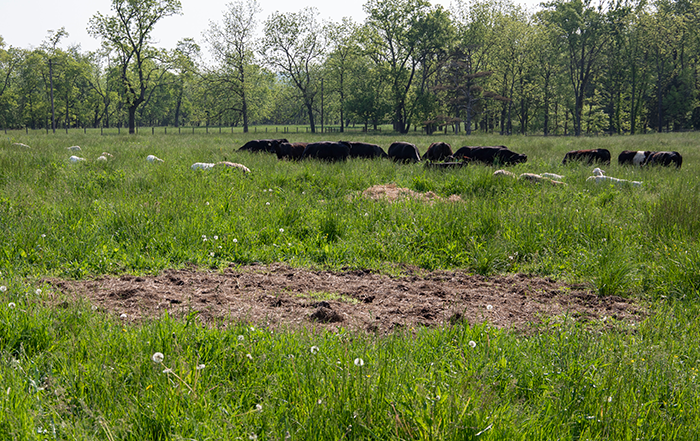Study confirms bale grazing benefits |
| By Amber Friedrichsen, Managing Editor |
|
|
 Like any grazing practice, the merits of bale grazing will vary with each individual farm. These merits can be in the form of more grazing days, lower feed costs, and less equipment use, which can translate to agronomic and economic gains. In a recent Clippings newsletter from the Midwest Forage Association, Jason Cavadini, the grazing outreach specialist with the University of Wisconsin Division of Extension, and Laura Paine, the outreach coordinator for Grassland 2.0, explained the key findings of a recent study on bale grazing and its effects on grazing land, as well as the financial benefits of the practice. The specialists suggest that bale grazing is particularly valuable to smaller operations that have limited winter housing available for livestock; however, it can be utilized by farms of all sizes. One of the primary benefits of bale grazing is that it requires less labor to feed hay during the winter. Moreover, bale grazing delivers nutrients and organic matter to the pasture in the form of hay and manure. With that said, the specialists note there is a risk of the nutrients being applied in excess on frozen soil. Conversely, bale grazing can cause compaction from livestock hoof traffic on wet, thawed soil. To evaluate these advantages and disadvantages, they conducted a bale grazing study that included 13 northwestern Wisconsin farms in 2023. The farms represented a range of different soil types, including silt loams, sandy soils, and clay soils. Farmers were required to pre-arrange bales in a grid pattern with 25 to 35 feet between bales, and the average bale grazing area was 4.1 acres. Researchers took hay and soil samples at each bale grazing site and measured soil compaction to a depth of 18 inches. They also calculated manure production per day using livestock numbers, bale allocation, and forage consumption data collected by farmers. The average manure application rate throughout the study was 53 tons per acre, contributing significant amounts of nitrogen, phosphorus, and potassium and offering an estimated average of $464 in total nutrient value. Hay nutrient values averaged 11% crude protein (CP) and 55% total digestible nutrients (TDN). The researchers estimated roughly 10% of each bale in the bale grazing systems were returned to the soil as residual. Soil nutrient levels varied by soil type; however, silt loam soils showed the greatest nitrogen and potassium levels near the soil surface. There was no difference in soil compaction between the bale grazing sites and the control paddocks. In fact, the sites where researchers anticipated higher soil compaction did not show significant differences after bale grazing, although the specialists point out that compaction potential can change over time and with variable field conditions. Overall, Cavadini and Paine suggest the study provided insight into how farmers are actually implementing bale grazing on-farm, and it confirmed that the perceived agronomic and economic benefits of the practice can and do exist. They add that the bale grazing trial will be repeated for another season under a more rigorous research design. |
